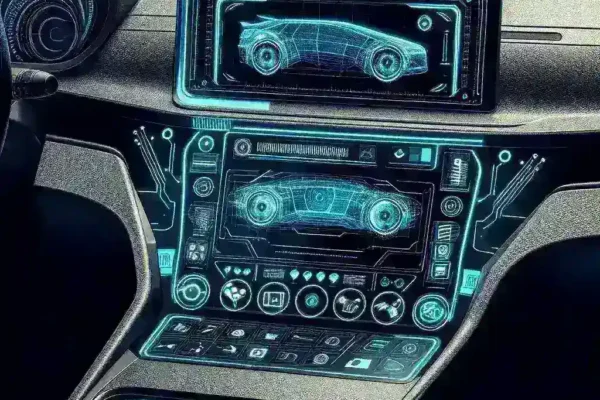Introduction
The rapid advancement of technology has ushered in a new era of interaction in the digital landscape. One of the most fascinating innovations in this space is the development of neural interface controllers. These devices can detect player intent without any physical movement, opening up a myriad of possibilities in gaming, virtual reality, and beyond. This article delves into the mechanics behind neural interface controllers, their historical context, future predictions, advantages and disadvantages, as well as their cultural relevance and real-world applications.
The Mechanics of Neural Interface Controllers
Neural interface controllers work by interpreting electrical signals produced by the brain. When a person thinks about a movement or action, neurons in the brain generate specific electrical patterns. These interfaces capture those patterns and translate them into commands that can be understood by computers or gaming systems. This groundbreaking technology relies on a combination of electroencephalography (EEG), machine learning algorithms, and advanced signal processing techniques.
How It Works
- Signal Acquisition: Electrodes are placed on the scalp to detect electrical activity in the brain.
- Signal Processing: The captured signals are processed to filter out noise and enhance relevant brain activity patterns.
- Translation: Machine learning algorithms analyze the processed signals to identify specific intentions, such as ‘move left’, ‘jump’, or ‘fire.’
- Execution: The identified intentions are sent to the game or application, allowing for direct interaction without physical input.
Historical Context
The concept of interfacing with the brain has its roots in neuroscience and bioengineering. As early as the 1960s, researchers began exploring how brain signals could be used to control external devices. The early work in this field was primarily focused on medical applications, such as assisting individuals with disabilities in regaining mobility or communication capabilities. Over the decades, technological advancements have propelled this research into the gaming and entertainment industries, resulting in the neural interface controllers we see today.
From Research to Reality
In the early 2000s, companies began developing consumer-grade brain-computer interfaces (BCIs) aimed at enhancing user experience in gaming and virtual reality. The introduction of devices like the Emotiv EPOC and NeuroSky made it possible for users to control games with their thoughts, although these were often limited in functionality. As machine learning techniques evolved, so did the accuracy and usability of these devices, leading to the current generation of neural interface controllers.
Future Predictions
The potential for neural interface controllers is vast, with numerous applications on the horizon:
- Enhanced Gaming Experiences: Future iterations could provide more immersive gameplay by accurately detecting player emotions and intentions.
- Virtual Reality Integration: As virtual reality continues to mature, neural interfaces may become standard for controlling avatars and interactions seamlessly.
- Therapeutic Applications: Beyond entertainment, these devices could offer new avenues for therapy in mental health and rehabilitation.
- Accessibility Innovations: Neural interfaces hold the promise of improving accessibility for individuals with physical disabilities, enabling them to interact with digital environments effortlessly.
Pros and Cons of Neural Interface Controllers
Advantages
- Enhanced User Interaction: Players can engage with games in a more intuitive manner, leading to more immersive experiences.
- Accessibility: This technology can make gaming more inclusive for individuals with mobility impairments.
- Real-Time Feedback: Neural interfaces provide instantaneous responses, making gameplay more dynamic and engaging.
Disadvantages
- Privacy Concerns: The collection of brain data raises ethical questions regarding user privacy and data security.
- Learning Curve: Users may require time to adapt to this new mode of interaction, potentially limiting initial adoption.
- Technical Limitations: Current technology may struggle with accurately interpreting complex thought patterns or intentions.
Cultural Relevance
As neural interface technology continues to develop, its impact on culture and society cannot be overstated. The merging of human cognition with digital interfaces represents a paradigm shift in how we think about technology. Films and literature have long speculated about the implications of such technology, ranging from dystopian warnings to optimistic visions of human enhancement.
In Popular Media
Media representations of brain-computer interfaces often shape public perception. Films like Ready Player One and The Matrix portray futuristic worlds where neural interfaces are commonplace, sparking interest and curiosity. These portrayals can influence societal acceptance and the adoption of such technologies in real life.
Real-World Examples
Several companies and research institutions are at the forefront of developing neural interface controllers:
- Neurable: This company has developed a VR game that allows players to control gameplay using their thoughts, demonstrating the practical application of neural interfaces in entertainment.
- Ctrl-labs: Acquired by Facebook, this startup has made strides in creating neural interfaces that can interpret electrical activity from the wrist, allowing users to control devices with muscle signals.
- OpenBCI: This open-source platform enables researchers and hobbyists to experiment with brain-computer interfaces, fostering innovation in the field.
Conclusion
The evolution of neural interface controllers marks a significant milestone in the convergence of human cognition and digital technology. By detecting player intent without physical movement, these controllers pave the way for more immersive, inclusive, and intuitive interactions with digital environments. As we progress into this uncharted territory, it is crucial to address the ethical implications and technical challenges that come with it. The future of gaming, therapy, and human-computer interaction is undoubtedly intertwined with the development of these remarkable devices.



